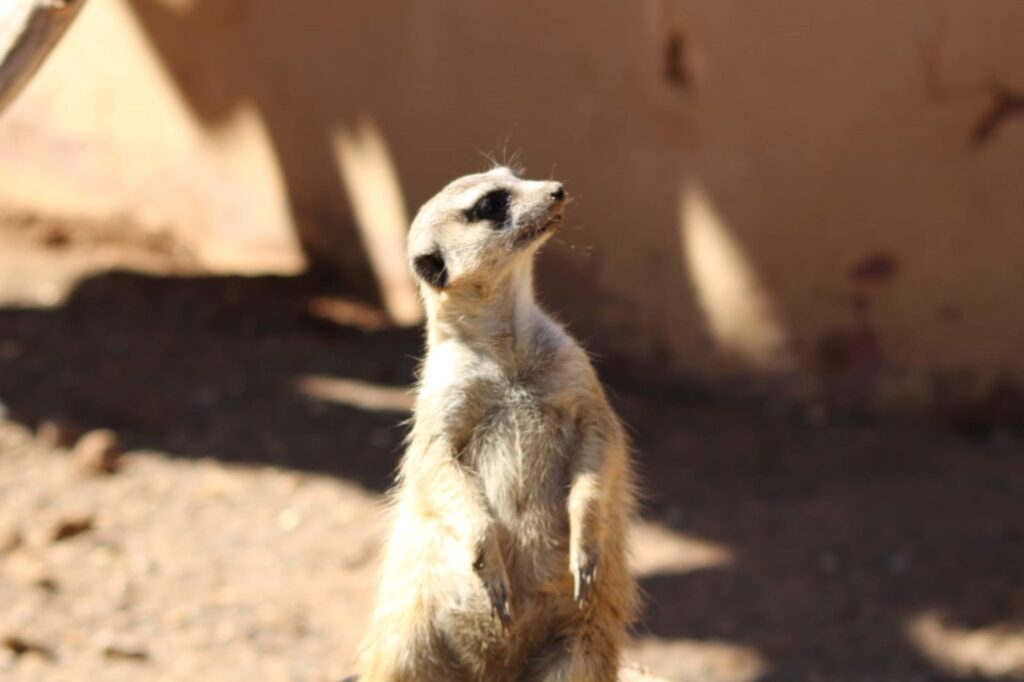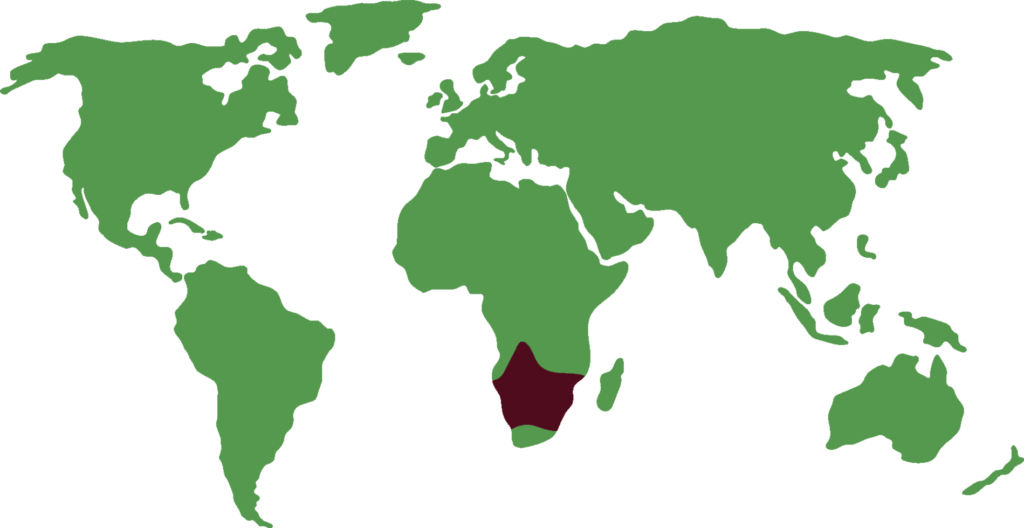MEERKAT
Suricata suricatta

LENGTH

35 cm
WEIGHT

750 g
LIFESPAN

14 years
Meerkats belong to the family Herpestidae or mongoose, which is the term by which all mammals of this family are commonly known. They are considered to be one of the smallest mongooses with a length of 25-35cm and an average weight of 750g.
General characteristics
They are usually brown and with black patches on the ears and around the eyes and they lack of abundant fur. The dark patches around the eyes are used to reduce glare from the sun and to see at a greater distance. Their pupils are long and horizontal, so that they have a very wide vision without having to turn their heads.
Their snouts are pointed and have strong, curved claws that they use to dig on the ground when foraging for food or when building underground burrows. On their eyes, theres a membrane that can protect it when they are digging.
Feeding
Meerkats are carnivorous and feed mainly on insects, larvae, worms and other invertebrates, but may also eat birds, small mammals and occasionally fruits and roots.
Behaviour
They live in large, interconnected underground colonies with multiple entrances, and each colony can reach a size of 40 individuals.
Lead by an alpha couple, all members of the group have a role such as babysitters and sentries, taking turns performing each role. In the event of a predator, they act as a group and fight to protect each other.
Reproduction
Their gestation period lasts approximately 77 days and they can give birth to up to 5 offspring in a single birth. Births tend to be more frequent during the months of warm, rainy weather from August to March.
Threats
There are no major threats to the species. The destruction of their habitat has not been severe.
Distribution
They are distributed in southern Africa, in the dry savannahs and open plains of the Kalahari and Namib deserts.

Did you know?
Meerkats stand up to look for prey or to watch out for predators. As well as when the group is eating, there is a sentinel who is guarding from a higher spot.
They are very curious and inquisitive animal and has a highly developed sense of smell.
You can frecuently see them under the sun, because they love basking in the sun.
Conservation status
